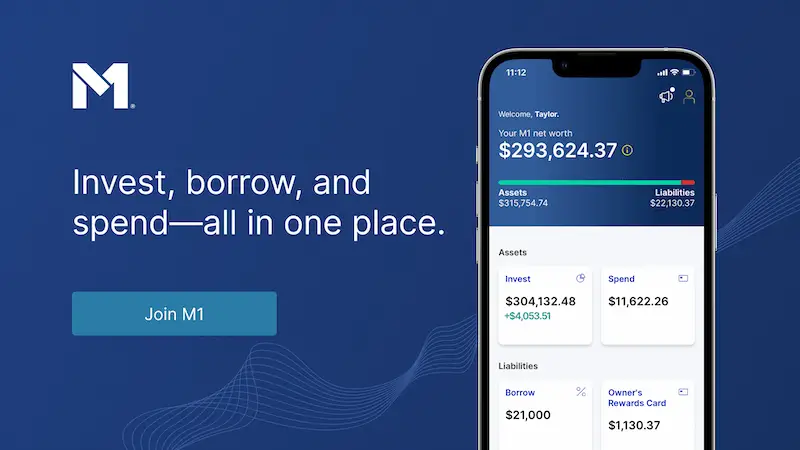Warren Buffett has advised DIY retail investors to simply buy a low-cost S&P 500 index fund and sit back and relax. Here we'll look at how to invest in the S&P 500 index with the 3 best S&P 500 ETFs – VOO, IVV, and SPY – and why you might want one over the others for 2024.
Interested in more Lazy Portfolios? See the full list here.
Disclosure: Some of the links on this page are referral links. At no additional cost to you, if you choose to make a purchase or sign up for a service after clicking through those links, I may receive a small commission. This allows me to continue producing high-quality content on this site and pays for the occasional cup of coffee. I have first-hand experience with every product or service I recommend, and I recommend them because I genuinely believe they are useful, not because of the commission I may get. Read more here.
Contents
Video
Prefer video? Watch it here:
Introduction – What Is the S&P 500 Index?
The S&P 500 Index, the modern shorthand name of the Standard & Poor's 500 Index, is simply a curated collection of the 500 largest publicly traded companies in the United States based on total market capitalization.
The index as we know it today was started in 1957. It is probably the most followed stock index, including household names like Apple, Amazon, Disney, Google, Microsoft, Johnson & Johnson, etc. These components are weighted in the index by their size, with the top 10 holdings making up over 25% of the index.
Because the index comprises roughly 82% of the total U.S. stock market and spans all market sectors, it is used as a proxy and benchmark for “the market” as a whole. Whether you're a beginner or a seasoned investor, the S&P 500 index is a reliable cornerstone of a long-term buy-and-hold investment strategy, providing broad diversification and relatively low risk within U.S. equities. If you've arrived on this page, you likely already know those facts.
Now let's look at how exactly to invest in the S&P 500 using index funds in the form of ETFs.
How To Invest in the S&P 500 – The 3 Best S&P 500 ETFs
Thankfully, to invest in the S&P 500 index, you don't have to buy the 500 companies' stocks individually. But you also can't buy an index directly. You need an index fund – a fund that tracks the index. Index funds come in the form of mutual funds or ETFs (Exchange Traded Funds). The latter is now starting to replace the former.
Because the S&P 500 index is so popular, there are quite a few ETFs that track the index, hold those underlying stocks, and trade as a single security/ticker, all at low fees. By buying shares of a single fund, you can own all 500 companies in the index.
Proponents of passive, buy-and-hold index investing like Warren Buffett, Jack Bogle, and many others suggest simply finding a highly liquid, low-cost index fund to access the S&P 500 index as the core holding in one's stocks portfolio. Below we'll look at several of the best S&P 500 ETFs to do just that.
Since these funds employ passive replication of the index as opposed to active management, they have low fees and high liquidity. All you have to do is buy shares of one of the ETFs below through an online broker and you can say you are invested in the S&P 500.
VOO – Vanguard S&P 500 ETF
Jack Bogle, considered by many to be “the father of index investing,” founded the brokerage firm Vanguard. Vanguard is famous for offering some of the cheapest index funds in the game. VOO is Vanguard's ETF to track the S&P 500 index.
The fund was established in 2010. It has over $500B in assets and an expense ratio of 0.03%. VOO would be my choice out of these 3 funds for the long term investor who is just buying and holding.
SPY – SPDR® S&P 500 ETF Trust
SPY is the oldest, largest, most highly traded ETF, boasting nearly $300B in assets. SPDR® launched this ETF in 1993. SPY is so ubiquitous that investors sometimes colloquially refer to the S&P 500 index itself as “SPY.”
Day traders will appreciate the greater volume and liquidity of SPY. This comes at a small cost, though; SPY has an expense ratio of 0.09%, 3x that of the other 2 funds in this list.
IVV – iShares Core S&P 500 ETF
IVV from iShares has $200B in assets. The fund was established in 2000 and carries an expense ratio of 0.03%. It can be considered nearly identical to VOO, but is comparatively less liquid. This makes it a great pairing for tax loss harvesting purposes to avoid a wash sale.
VOO vs. SPY vs. IVV – Conclusion and Where To Buy These S&P 500 ETFs
All 3 of these ETFs are solid choices to invest in the S&P 500 index, so you can't really go wrong. All 3 have very high AUM and liquidity, and all 3 have a history of tracking the index reliably and accurately. At the time of writing, IVV and VOO have the same expense ratio of 0.03% compared to 0.09% for SPY, so I would go with IVV or VOO. I'm partial to Vanguard, so I use VOO myself.
Day traders might appreciate the greater liquidity of SPY, as it's the largest and oldest ETF out there, but buy-and-hold investors should prefer the lower fee of VOO or IVV.
All 3 of these S&P 500 ETFs should be available at any major broker. My choice is M1 Finance. The online broker has zero transaction fees and offers fractional shares, dynamic rebalancing, and a modern, user-friendly interface and mobile app. I wrote a comprehensive review of M1 Finance here.
Disclosures: I am long VOO in my own portfolio.
Interested in more Lazy Portfolios? See the full list here.
Disclaimer: While I love diving into investing-related data and playing around with backtests, this is not financial advice, investing advice, or tax advice. The information on this website is for informational, educational, and entertainment purposes only. Investment products discussed (ETFs, mutual funds, etc.) are for illustrative purposes only. It is not a research report. It is not a recommendation to buy, sell, or otherwise transact in any of the products mentioned. I always attempt to ensure the accuracy of information presented but that accuracy cannot be guaranteed. Do your own due diligence. I mention M1 Finance a lot around here. M1 does not provide investment advice, and this is not an offer or solicitation of an offer, or advice to buy or sell any security, and you are encouraged to consult your personal investment, legal, and tax advisors. Hypothetical examples used, such as historical backtests, do not reflect any specific investments, are for illustrative purposes only, and should not be considered an offer to buy or sell any products. All investing involves risk, including the risk of losing the money you invest. Past performance does not guarantee future results. Opinions are my own and do not represent those of other parties mentioned. Read my lengthier disclaimer here.

Are you nearing or in retirement? Use my link here to get a free holistic financial plan and to take advantage of 25% exclusive savings on financial planning and wealth management services from fiduciary advisors at Retirable to manage your savings, spend smarter, and navigate key decisions.

A couple things.
1. I don’t know what liquidity has to do with it, but suppose I implement a strategy where I periodically move between S&P and another index. Is SPY the correct choice? (The strategy is dual momentum where I plan to experiment a small portion of the portfolio)
2. When writing about IVV, you mention tax loss harvesting. But it’s my understanding that all three of these funds track the same index and therefore would be identical. I don’t know that this would really avoid a wash sale.
1. Any of the 3 would work for this, assuming the same spread, which is a common measure of liquidity.
2. IRS has never explicitly defined wash sale. Different providers. Probably fine. Or just use VTI, IWB, VONE, etc. to be sure.
In looking at VOO v IVV for a taxable account, it would seem IVV may be the better choice since it seem to minimizes capital gains and instead, tends to only deliver qualified dividends to reduce tax burden. Would you agree?
Haven’t looked into the precise tax cost of these funds. They should be similar; they track the same index.
I haven’t checked every year, but on some years at least the tracking error on VOO was EXACTLY the difference in expense ratio between VOO and SPY. Furthermore SPY has a tighter spread.
What about SPLG?
That one works too, though it’s much less popular than the others listed here.
SPLG also track S&P 500 and the expense ratio is also 0.03%
True, thanks for pointing it out! It’s much less popular than the others listed here.
You should consider adding FNILX. With a 0% expense ratio and it maps to the S&P 500 I would recommend it over these
Thanks for the comment, Ross. FNILX is a mutual fund, and is only able to be bought and held at Fidelity. Also note that FNILX does not track the S&P 500 Index, though it should be a comparable investment.